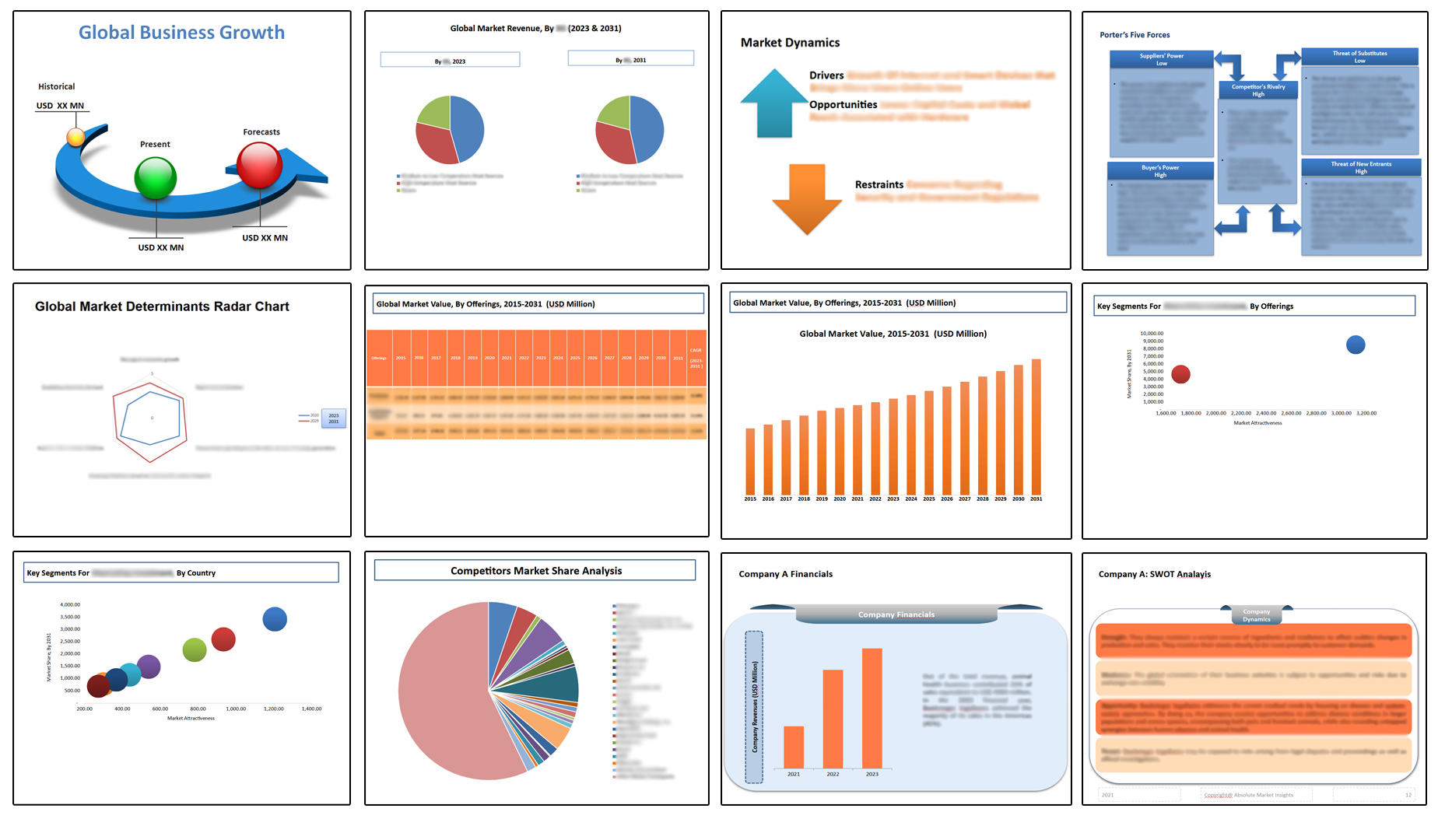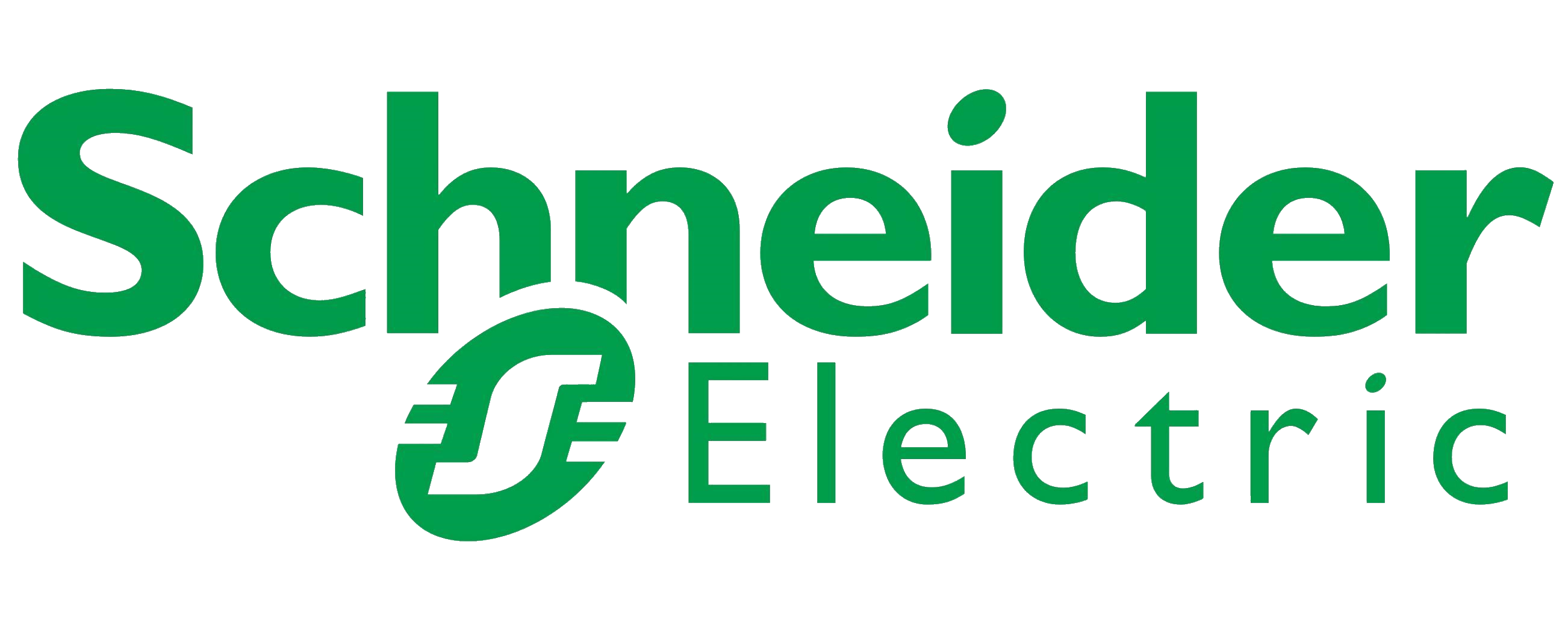Global Autonomous Construction Equipment Market By Equipment Type, By Automation Type, By Application, By Region & Segmental Insights Trends and Forecast, 2024 – 2034
- Industry: Construction & Manufacturing
- Report ID: TNR-110-1280
- Number of Pages: 420
- Table/Charts : Yes
- September, 2024
- Base Year : 2024
- No. of Companies : 10+
- No. of Countries : 29
- Views : 10057
- Covid Impact Covered: Yes
- War Impact Covered: Yes
- Formats : PDF, Excel, PPT
Autonomous construction equipment refers to machinery and vehicles that operate with minimal or no human intervention, using technologies like artificial intelligence, machine learning, and advanced sensors. The global autonomous construction equipment market is gaining significant traction due to the demand for increased efficiency, safety, and productivity on job sites. These machines are pivotal in reducing human error and optimizing construction operations, leading to faster project completion and cost savings. “The global autonomous construction equipment market generated revenue of US$ 7.8 billion in 2023 and is expected to grow at a compound annual growth rate (CAGR) of 8.3% from 2024 to 2034.”
Applications include earthmoving, material handling, and road construction. For instance, autonomous bulldozers, excavators, and trucks can perform tasks such as digging, grading, and transporting materials with high precision, often working around the clock without the need for breaks, significantly enhancing operational efficiency.

Global Autonomous Construction Equipment Market Segmental Analysis:
Global Autonomous Construction Equipment Market By Equipment Type
In 2023, cranes by equipment type dominated the global autonomous construction equipment market. Cranes are essential in the construction industry for lifting and moving heavy materials, placing them accurately at heights, and facilitating the assembly of large structures. Their importance lies in their ability to handle tasks that are beyond human capacity, ensuring the safe and efficient completion of projects. Autonomous cranes enhance these benefits by reducing the need for manual operation, increasing precision, and minimizing the risk of accidents. They are crucial for high-rise building projects, bridge construction, and large infrastructure developments, making them indispensable in modern construction.

Global Autonomous Construction Equipment Market By Automation Type
Semi-autonomous construction equipment is poised to dominate the global autonomous construction equipment market in the coming years. Unlike fully autonomous machines, semi-autonomous equipment still requires some level of human supervision or intervention, often to handle complex or unpredictable tasks. This combination of human oversight and automation offers a balance between control and efficiency. Semi-autonomous equipment is often more adaptable to varied construction environments, providing a safety net in situations where full autonomy might struggle. Their ability to enhance productivity while maintaining human judgment and flexibility makes them more suitable for diverse and challenging construction projects, driving their growing market dominance.

Global Autonomous Construction Equipment Market By Application
Autonomous construction equipment is increasingly prevalent in construction applications, outpacing its use in other industries. These machines are designed to handle a variety of tasks, such as earthmoving, grading, and material handling, with minimal human intervention, making them highly valuable on construction sites. The demand for greater efficiency, safety, and precision in construction has driven the adoption of autonomous equipment. Compared to other sectors, construction requires machinery that can operate continuously and accurately in dynamic environments, making autonomy a key advantage. As a result, the construction industry leads in the deployment of these advanced technologies, maximizing productivity and reducing operational risks.

Global Autonomous Construction Equipment Market By Region
In 2023, Asia Pacific dominated the global autonomous construction equipment market, driven by rapid urbanization, infrastructure development, and strong economic growth in countries like China, India, and Japan. The region’s booming construction industry, fueled by government investments in large-scale projects such as smart cities and transportation networks, has led to a high demand for advanced construction technologies. Autonomous construction equipment, offering increased efficiency and safety, is particularly well-suited to meet the region’s ambitious development goals. Additionally, the presence of major construction equipment manufacturers in Asia Pacific further supports the widespread adoption and growth of autonomous machinery in the market.

Global Autonomous Construction Equipment Market Dynamics
Global Autonomous Construction Equipment Market Growth Driver:
- The rising focus on enhancing construction site safety and efficiency is driving the adoption of autonomous construction equipment. These machines reduce human involvement in hazardous tasks, minimize accidents, and ensure precise, continuous operations, boosting productivity.
- The increasing demand for large-scale infrastructure projects, including smart cities and transportation networks, is fueling the growth of the global autonomous construction equipment market. Governments and private sectors are investing heavily in advanced technologies to meet construction timelines and improve project outcomes.
Global Autonomous Construction Equipment Market Restraint:
- High initial costs and significant investment in technology infrastructure pose a restraint to the global autonomous construction equipment market, making it challenging for smaller construction firms to adopt these advanced machines and slowing widespread market penetration.
- Limited technological expertise and the complexity of integrating autonomous systems into existing construction workflows hinder market growth. Many companies face challenges in training personnel and ensuring seamless operation, which can delay the adoption of autonomous construction equipment across the industry.
Global Autonomous Construction Equipment Market Opportunity:
- The global autonomous construction equipment market has significant growth opportunities in developing regions where rapid urbanization and infrastructure development are driving demand. Emerging economies are increasingly adopting advanced technologies to meet their ambitious construction and modernization goals.
- Integration of autonomous construction equipment with advanced technologies like AI, IoT, and 5G offers a substantial opportunity for market growth. These technologies enhance equipment capabilities, enabling real-time data analysis, predictive maintenance, and improved efficiency, making construction operations more intelligent and responsive.
Global Autonomous Construction Equipment Market Trends:
- A key trend in the global autonomous construction equipment market is the increasing adoption of hybrid systems, combining semi-autonomous and fully autonomous functionalities. This approach offers flexibility, allowing operators to manage complex tasks while enhancing overall efficiency and safety.
- The integration of autonomous construction equipment with advanced telematics and remote monitoring systems is gaining traction. These trends enable real-time performance tracking, diagnostics, and data-driven decision-making, allowing construction firms to optimize operations, reduce downtime, and improve project management.
Competitive Landscape
The competitive landscape of the global autonomous construction equipment market features major players like Caterpillar, Komatsu, and Volvo, investing heavily in R&D and technological advancements. Companies compete on innovation, integration of AI and automation, and expanding their product portfolios to capture market share.
Some of the players operating in the autonomous construction equipment market are
- Bobcat Company
- Case Construction Equipment
- Caterpillar Inc.
- Doosan
- Hitachi Construction Machinery Co., Ltd.
- Komatsu Ltd.
- Royal Truck & Equipment
- Sany Group
- Topcon Corporation
- Volvo Construction Equipment
- Other Industry Participants
Global Autonomous Construction Equipment Market Scope:
| Report Specifications | Details |
| Market Revenue in 2023 | US$ 7.8 Bn |
| Market Size Forecast by 2034 | US$ 18.8 Bn |
| Growth Rate (CAGR) | 8.3% |
| Historic Data | 2016 – 2022 |
| Base Year for Estimation | 2023 |
| Forecast Period | 2024 – 2034 |
| Report Inclusions | Market Size & Estimates, Market Dynamics, Competitive Scenario, Trends, Growth Factors, Market Determinants, Key Investment Segmentation, Product/Service/Solutions Benchmarking |
| Segments Covered | By Equipment Type, By Automation Type, By Application, By Region |
| Regions Covered | North America, Europe, Asia Pacific, Middle East & Africa, Latin America |
| Countries Covered | U.S., Canada, Mexico, Rest of North America, France, The UK, Spain, Germany, Italy, Nordic Countries (Denmark, Finland, Iceland, Sweden, Norway), Benelux Union (Belgium, The Netherlands, Luxembourg), Rest of Europe, China, Japan, India, New Zealand, Australia, South Korea, Southeast Asia (Indonesia, Thailand, Malaysia, Singapore, Rest of Southeast Asia), Rest of Asia Pacific, Saudi Arabia, UAE, Egypt, Kuwait, South Africa, Rest of Middle East & Africa, Brazil, Argentina, Rest of Latin America |
| Key Players | Bobcat Company, Case Construction Equipment, Caterpillar Inc., Doosan, Hitachi Construction Machinery Co., Ltd., Komatsu Ltd., Royal Truck & Equipment, Sany Group, Topcon Corporation, Volvo Construction Equipment |
| Customization Scope | Customization allows for the inclusion/modification of content pertaining to geographical regions, countries, and specific market segments. |
| Pricing & Procurement Options | Explore purchase options tailored to your specific research requirements |
| Contact Details | Consult With Our Expert
Japan (Toll-Free): +81 663-386-8111 South Korea (Toll-Free): +82-808- 703-126 Saudi Arabia (Toll-Free): +966 800-850-1643 United Kingdom: +44 753-710-5080 United States: +1 302-232-5106 E-mail: askanexpert@thenicheresearch.com
|
Global Autonomous Construction Equipment Market
By Equipment Type
- Excavators
- Bulldozers
- Loaders
- Dump Trucks
- Graders
- Cranes
- Pavers
- Compactors
- Drilling Machines
- Others
By Automation Type
- Fully Autonomous
- Semi-Autonomous
By Application
- Construction
- Mining
- Demolition
- Roadwork
- Material Handling
- Others
By Region
- North America (U.S., Canada, Mexico, Rest of North America)
- Europe (France, The UK, Spain, Germany, Italy, Nordic Countries (Denmark, Finland, Iceland, Sweden, Norway), Benelux Union (Belgium, The Netherlands, Luxembourg), Rest of Europe)
- Asia Pacific (China, Japan, India, New Zealand, Australia, South Korea, Southeast Asia (Indonesia, Thailand, Malaysia, Singapore, Rest of Southeast Asia), Rest of Asia Pacific)
- Middle East & Africa (Saudi Arabia, UAE, Egypt, Kuwait, South Africa, Rest of Middle East & Africa)
- Latin America (Brazil, Argentina, Rest of Latin America)
Report Layout:

Table of Contents
Note: This ToC is tentative and can be changed according to the research study conducted during the course of report completion.
**Exclusive for Multi-User and Enterprise User.
Global Autonomous Construction Equipment Market
By Equipment Type
- Excavators
- Bulldozers
- Loaders
- Dump Trucks
- Graders
- Cranes
- Pavers
- Compactors
- Drilling Machines
- Others
By Automation Type
- Fully Autonomous
- Semi-Autonomous
By Application
- Construction
- Mining
- Demolition
- Roadwork
- Material Handling
- Others
By Region
- North America (U.S., Canada, Mexico, Rest of North America)
- Europe (France, The UK, Spain, Germany, Italy, Nordic Countries (Denmark, Finland, Iceland, Sweden, Norway), Benelux Union (Belgium, The Netherlands, Luxembourg), Rest of Europe)
- Asia Pacific (China, Japan, India, New Zealand, Australia, South Korea, Southeast Asia (Indonesia, Thailand, Malaysia, Singapore, Rest of Southeast Asia), Rest of Asia Pacific)
- Middle East & Africa (Saudi Arabia, UAE, Egypt, Kuwait, South Africa, Rest of Middle East & Africa)
- Latin America (Brazil, Argentina, Rest of Latin America)
The Niche Research approach encompasses both primary and secondary research methods to provide comprehensive insights. While primary research is the cornerstone of our studies, we also incorporate secondary research sources such as company annual reports, premium industry databases, press releases, industry journals, and white papers.
Within our primary research, we actively engage with various industry stakeholders, conducting paid interviews and surveys. Our meticulous analysis extends to every market participant in major countries, allowing us to thoroughly examine their portfolios, calculate market shares, and segment revenues.
Our data collection primarily focuses on individual countries within our research scope, enabling us to estimate regional market sizes. Typically, we employ a bottom-up approach, meticulously tracking trends in different countries. We analyze growth drivers, constraints, technological innovations, and opportunities for each country, ultimately arriving at regional figures.Our process begins by examining the growth prospects of each country. Building upon these insights, we project growth and trends for the entire region. Finally, we utilize our proprietary model to refine estimations and forecasts.
Our data validation standards are integral to ensuring the reliability and accuracy of our research findings. Here’s a breakdown of our data validation processes and the stakeholders we engage with during our primary research:
- Supply Side Analysis: We initiate a supply side analysis by directly contacting market participants, through telephonic interviews and questionnaires containing both open-ended and close-ended questions. We gather information on their portfolios, segment revenues, developments, and growth strategies.
- Demand Side Analysis: To gain insights into adoption trends and consumer preferences, we reach out to target customers and users (non-vendors). This information forms a vital part of the qualitative analysis section of our reports, covering market dynamics, adoption trends, consumer behavior, spending patterns, and other related aspects.
- Consultant Insights: We tap into the expertise of our partner consultants from around the world to obtain their unique viewpoints and perspectives. Their insights contribute to a well-rounded understanding of the markets under investigation.
- In-House Validation: To ensure data accuracy and reliability, we conduct cross-validation of data points and information through our in-house team of consultants and utilize advanced data modeling tools for thorough verification.
The forecasts we provide are based on a comprehensive assessment of various factors, including:
- Market Trends and Past Performance (Last Five Years): We accurately analyze market trends and performance data from preceding five years to identify historical patterns and understand the market’s evolution.
- Historical Performance and Growth of Market Participants: We assess the historical performance and growth trajectories of key market participants. This analysis provides insights into the competitive landscape and individual company strategies.
- Market Determinants Impact Analysis (Next Eight Years): We conduct a rigorous analysis of the factors that are projected to influence the market over the next eight years. This includes assessing both internal and external determinants that can shape market dynamics.
- Drivers and Challenges for the Forecast Period:Identify the factors expected to drive market growth during the forecast period, as well as the challenges that the industry may face. This analysis aids in deriving an accurate growth rate projection.
- New Acquisitions, Collaborations, or Partnerships: We keep a close watch on any new acquisitions, collaborations, or partnerships within the industry. These developments can have a significant impact on market dynamics and competitiveness.
- Macro and Micro Factors Analysis:A thorough examination of both macro-level factors (e.g., economic trends, regulatory changes) and micro-level factors (e.g., technological advancements, consumer preferences) that may influence the market during the forecast period.
- End-User Sentiment Analysis: To understand the market from the end-user perspective, we conduct sentiment analysis. This involves assessing the sentiment, preferences, and feedback of the end-users, which can provide valuable insights into market trends.
- Perspective of Primary Participants: Insights gathered directly from primary research participants play a crucial role in shaping our forecasts. Their perspectives and experiences provide valuable qualitative data.
- Year-on-Year Growth Trend: We utilize a year-on-year growth trend based on historical market growth and expected future trends. This helps in formulating our growth projections, aligning them with the market’s historical performance.
Research process adopted by TNR involves multiple stages, including data collection, validation, quality checks, and presentation. It’s crucial that the data and information we provide add value to your existing market understanding and expertise. We have also established partnerships with business consulting, research, and survey organizations across regions and globally to collaborate on regional analysis and data validation, ensuring the highest level of accuracy and reliability in our reports.















